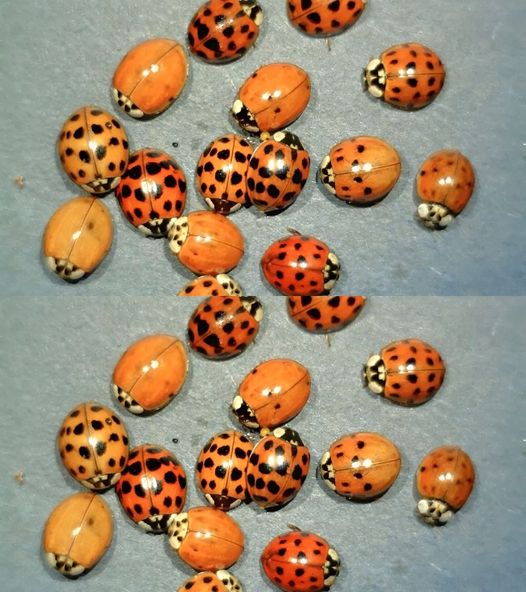The Asian lady beetles tend to be a bit larger and more oval than ladybugs and come in a variety of colors from red to orange or yellow. The easiest way to tell them apart is to look for a distinctive white “M” on the beetles’ otherwise black heads.
Maine has several varieties of native ladybugs and the multicolored Asian lady beetle is an invasive species, according to Armstrong. They were introduced deliberately in 1916 to help control garden pests.
Also read: Rally to be held in Portland in support of Maine lobster industry
“They were brought in the hopes [that] because they are so predacious on aphids, mites and other scaled insects, that they would eat those pests,” Armstrong said. “People thought they were more voracious than our native ladybugs and said, ‘Let’s release these ones of Asia and maybe they will help.’”
They have been munching on garden pests ever since. This summer, according to Armstrong, the weather in Maine created a bumper crop of the lady beetle’s food supply.
“Anytime we get periods of dry weather, it really promotes and favors aphids and mites who thrive under those conditions,” Armstrong said. “That means there was an abundant food source and [the lady beetles] were able to fatten themselves up and lay more eggs that make more lady beetles.”
Most of Maine experienced periods of drought this past summer.
Armstrong has seen the Asian lady beetles gathering in his own central Maine home.
“They spend the winter in a kind of dormancy,” he said. “In a way, when they move into a home it’s a double edged sword for them.”
When people keep their homes nice and warm, the lady beetles won’t become dormant and that means they are going to get hungry, Armstrong said. But there is likely no food to be found inside so they eventually starve to death.
“If they stayed outside in a more natural setting that gets colder and stays colder, they would stay dormant the whole winter,” Armstrong said. “So in a way they are killing themselves by staying warm.”
Once the days start getting colder, the lady beetles should stop moving into homes, Armstrong said. As for the ones already there, he said the best way to evict them is sweeping or vacuuming them up and depositing them back outside.
“When it gets cold they will slow down,” he said. “What they are saying now is, ‘Now is our chance to find a place to spend the winter.”

